Breastmilk Popsicles? Try this Pre-Feeding Activity with Dawn Winkelmann, MS, CCC-SLP
In this episode we're talking about:
- Why breastmilk and/or formula frozen into a Tiny Pop mold can be a valuable pre-feeding experiment for your baby
- Solid food tweaks to make when your baby is teething
- Other pre-feeding skills you can utilize before your baby starts solid food
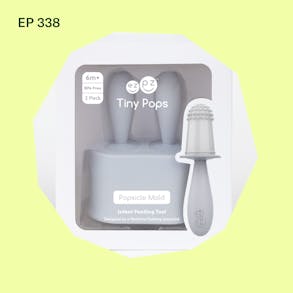
LISTEN TO THIS EPISODE
Episode Description
What’s the deal with breastmilk popsicles? …or formula popsicles? Or popsicles in general for a pre-feeding skill. In this episode Dawn Winkelmann, MS, CCC-SLP introduces the Tiny Pops she designed for ezpz. We talk about the developmental benefits of popsicles, which foods freeze well for babies and how to incorporate popsicles into your pre-feeding routine.
About the Guest

- Dawn Winkelmann, MS, CCC-SLP is a pediatric feeding expert and product designer for ezpz
- Dawn designed the new ezpz Tiny Pops which can be used for pre-feeding before your baby starts solid foods
Links from this Episode
- Get 15% off the ezpz Tiny Pops and all ezpz feeding gear with affiliate discount code BABYLED: http://shrsl.com/1s7be


- Baby-Led Weaning with Katie Ferraro program with the 100 First Foods™ Daily Meal Plan, join here: https://babyledweaning.co/program
- Baby-Led Weaning for Beginners free online workshop with 100 First Foods™ list to all attendees, register here: https://babyledweaning.co/baby-led-weaning-for-beginners
Other episodes related to this topic:
- Episode 290 - Pre-Feeding Skills: What Can My Baby Do Before Beginning Solid Foods? with Marsha Dunn Klein OTR/L, MEd, FAOTA https://blwpodcast.com/episodes/290
- Episode 300 - How to Use Oral Development Tools for Your Baby with Dawn Winkelmann, MS, CCC-SLP https://blwpodcast.com/episodes/300
- Episode 114 - Revolutionizing Infant Feeding Gear with ezpz Founder & CEO Lindsey Laurain https://blwpodcast.com/episodes/114

Latest Episodes
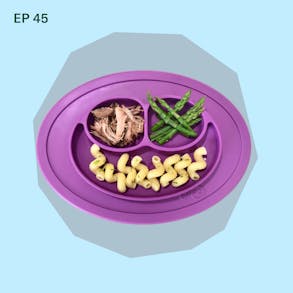
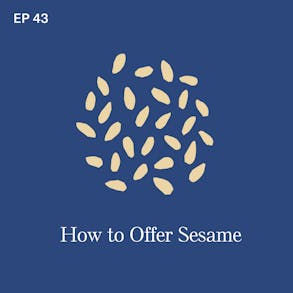
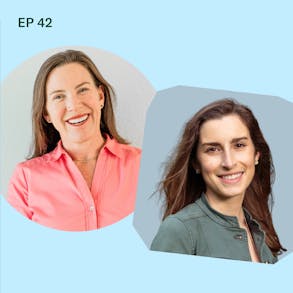
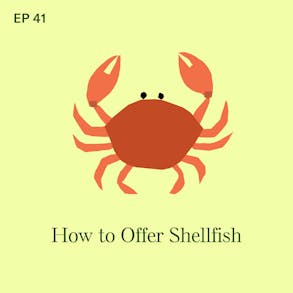
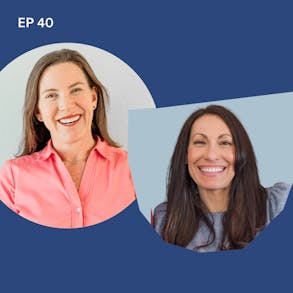
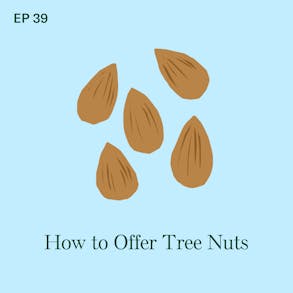
Katie Ferraro (1s):
Did you know I have a baby-led weaning YouTube channel? Now I'm fully aware, I'm telling you this while you're listening to a podcast. But if you wanna see the visual of what baby-led weaning looks like with lots of demos on how to safely prep foods for your baby, it's all over on the baby-led weaning YouTube channel. It's literally the name of the channel, baby-led weaning super original. I know we launched the YouTube channel last year and I have been having so much more fun making videos than I ever thought I would because you know, sometimes with baby led weening you just have to see it to believe it. I put out new BLW videos every week and there are playlists of babies gagging on food, for example. So you know what it looks like and how to react when this happens to your baby. Plus lots of videos with BLW recipes so you'll never run out of ideas of foods to feed your baby. Head to the baby-led weaning channel on YouTube.
Katie Ferraro (44s):
And while you're there, hit subscribe. You can get notified each week when new videos are live. Plus if you're up for it, whatever video you're watching, leave me a comment. I personally read and respond to every comment. I love to know what kind of videos you're liking and what you wanna see more of. Again, that's baby-led weaning on YouTube and I'll see you there.
Katie Ferraro (1m 57s):
Hey there, I'm Katie Ferraro, registered dietitian, college nutrition professor and mom of seven specializing in baby-led weaning here on the baby-led weening Made Easy podcast. I help you strip out all of the noise and nonsense about feeding, leaving you with the confidence and knowledge you need to give your baby a safe start to solid foods using baby-led weaning Breast milk popsicles or formula popsicles. They're a thing. Who knew? I have to admit, when my friend Dawn Winkelmann told me top secret, I'm developing a breast milk Popsicle mold for EZPZ, I admittedly rolled my eyes.
Katie Ferraro (2m 37s):
I was like, Dawn, who's gonna make or use a breast milk Popsicle? Turns out people love breast milk popsicles and there's this whole new category of pre feeding skills that Dawn and the team at EZPZ is really helping to revolutionize. So Dawn was on a little while back, she's a speech language pathologist. She recently launched a series of oral development tools for EZPZ. They're the company that makes the original silicone suction mats and bowls. And I've worked with them for about eight years at this point in the feeding space and feeding gear cuz I kind of pick up with babies after six months of age when they start solid foods. But from a developmental standpoint, there are ways that we can help our babies get ready for when they start solid foods and to help set them up for success.
Katie Ferraro (3m 21s):
And that's kind of the whole notion of this pre feeding category that again, Dawn is a very vital player in. So today on the podcast she's gonna be talking about the development of the breast milk Popsicle molds. They also can have formula or purees. I did, I made a meat Popsicle the other day for a baby and she's gonna talk about how now the meat popsicle just a heads up would not be for a baby prior to six months of age. So we're focusing primarily on breast milk and formula, but how these tools can kind of contribute to your baby's success. So if you kind of like the behind the scenes stories of how products come to market and then how the designer envisions that they will be used. I think you guys will love this episode called Breast Milk Popsicles.
Katie Ferraro (4m 1s):
Try this pre feeding activity. It's with Dawn Winkelmann, she's a speech language pathologist, pediatric feeding expert for EZPZ. She's also a feeding therapist. So I love that all of the products that she designed, they come out of a place of need. I think those are the best products in the baby space, right? Where you're just like, wait a minute, someone solved a problem and she's gonna talk about some of the other existing Popsicle molds that are out there and why they're not appropriate for babies. So with no further ado, here's Don talking and teaching about breast milk popsicles or formula popsicles.
Dawn Winkelmann (4m 33s):
Hi Katie. It's good to be here. Thanks for having me. Okay,
Katie Ferraro (4m 36s):
I wanna hear what's new in your life, what's new with work. I know you guys recently got back from the ABC Kids Expo in Vegas, so you were there on behalf of the work you do with EZPZ. So what sort of new trends are you seeing in the baby gear and baby feeding world?
Dawn Winkelmann (4m 50s):
Actually it's been more, it was a little disappointing to be honest. The only innovation that was really happening at ABC was actually at our booth, which sounds completely conceived.
Katie Ferraro (5m 1s):
I'm glad I didn't go since I already know all your products.
Dawn Winkelmann (5m 3s):
Yeah, but it was like people had like more patterns of things. So if they had like a particular pattern like of a bib or something that they had more patterns but nothing new and innovative, nothing that was like groundbreaking.
Katie Ferraro (5m 16s):
Yeah, I feel like people are just excited to be in person and like maybe a new color of things but there's nothing like super awesome happening in the baby gear space.
Dawn Winkelmann (5m 24s):
Yeah, nothing, you know, nothing really astounding. There was one or two small brands that were actually launching at ABC that I think have really good promise that you and I can take offline and and chat about that later. But really the, we were the innovators in the space there. Like we had our tiny pops which we're gonna be talking about you know here today. We had our oral development tools, you know, really groundbreaking things that are new in the juvenile space that really hasn't been done before. So that's, that was kind of exciting. I kind of showcased that.
Katie Ferraro (5m 57s):
And you mentioned some of the new product launches. You guys have had so much stuff with EZPZ come out lately, I swear I can hardly keep up. You are continually putting out all these new developmentally advantageous products that help promote independent feeding. You mentioned the tiny pop, so we're gonna be talking today about breast milk popsicles. Tell me a little bit about those EZPZ tiny pops. Why did you decide to create this product?
Dawn Winkelmann (6m 18s):
So most popsicles on the market are geared towards a toddler's oral cavity. So they have a large mold that is too wide or too long for a baby's tiny compact oral cavity. Because of this developmentally inappropriate feature, parents have to hold those types of popsicles and actually put them into a baby's mouth, which of course as we both know is contradictory to a baby-led approach to feeding and may actually increase gagging and choking wrists since they're kind of shoving it into their mouth and holding it in there and with it being too big and, and very difficult for babies to be able to swallow around it. In addition, most popsicles have a really narrow handle that's difficult for babies to hold independently.
Dawn Winkelmann (7m 2s):
Thus babies will drop the popsicle and or lose interest, you know, spilling, you know, the hard-earned breast milk or expensive formula. And parents will again have to hold that popsicle for the baby and actually place it into their mouth so the baby isn't, it's not a baby led kind of example, right? The baby's not holding onto the Popsicle, the baby's not putting it into their own mouth. So, and that's just not acceptable, you know, this is nutrition that baby's need that that formula, that breast milk and a really good sensory activity that babies need. So I design a Popsicle mold that is baby -led, which has a baby-led handle which is short, fat and round, making it easy for a baby to grasp it and eat it independently.
Dawn Winkelmann (7m 43s):
And it's also portion sized for a baby's developing mouth. So that is perfect size for their mouth and for their tummy as well.
Katie Ferraro (7m 52s):
I love that you only design products that the world needs. I feel like there's so much stuff in the baby space where you're like, you know, nobody actually needs that, right? But I'm like, if Don designed it, it's because there was either another product out there that wasn't appropriate for this age range and you and I do most of our work in, I know you kind of go up the chain, but I really specialize in infant feeding. So any new tool that comes out from EZPZ that's kind of for that early eater, I know you designed it for the right reason. So I really appreciate that. And we have, you know, so many parents listening who are excited or they might be anxious about starting solid foods and they wanna know what they can do prior to when their baby is, is ready to start solid foods. As far as like a, you know, like a pre feeding skill, I know I hear you talk about this, how does the tiny pop play into that pre feeding category for infants?
Dawn Winkelmann (8m 35s):
So popsicles can really help baby explore their own mouth. I mean you see babies are putting their feet in their mouth, their hands and their mouths, you know their fingers, all different objects. Popsicles can really help babies really explore that and those are critical pre feeding movement. So having things putting into their mouth even their own hand is pre feeding, right? We want babies to learn about those movements, we want them to learn about those sensations and really start to establish mouthing early on. So for example, generalized mouthing is mouthing at the front of the mouth. So baby putting objects even maybe their own fist in the front of the mouth. And this developmental stage occurs anywhere between four and six months of age.
Dawn Winkelmann (9m 20s):
And during that time we can introduce breast milk or formula in the tiny pops and have them learn lip rounding and tongue elevation and really explore that generalized mouthing stage that is developmentally appropriate. And then there's also discriminative mouthing, which is a different type of mouthing that includes the oral discrimination of the mouth needed for safe eating and drinking. And this develops around six months of age and the EZPZ tiny pops can then provide a texture to bridge the advancement of baby's mouthing development and prepare them for starting solids, which also begins at six months of age. So at that time we can start filling up that Popsicle with you know, purees and different types of other foods in addition to breast milk or formula.
Dawn Winkelmann (10m 3s):
So we're really moving the mouth in these pre feeding activities on really focused on mouth movements and generalized mouthing of the oral cavity so that we're really preparing that baby for solid foods. You know, you and I talk about this all the time that parents are just like, you know, my baby's just sitting there with like food in front of them and they're not really interested If we can kind of gear babies to actually start working on these mouthing sensations before we start solids at six months of age. You know, using the tiny pops is is a great tool then Baby can be more ready from a sensory standpoint and from a motor standpoint as well.
Katie Ferraro (10m 38s):
And so let's talk a little bit about what sort of liquids or foods you're freezing and using with the tiny pops. Cause I know you've mentioned breast milk and formula pops. We recently for a little bit of an older baby who'd already started solid foods, they did a pure meat pop. It was like this family was so anxious about transitioning to meat. So I was showing them all the different ways that you can help introduce your baby to this new taste and this new texture and the iron foods. What other things are you putting in the tiny pop besides breast milk and formula for the pre feeding skill?
Dawn Winkelmann (11m 3s):
Yeah, so for baby six plus months I'm using them to introduce colorful purees, right? So it could be, you know, red, orange, yellow, really bright colors, which is very different from like a very opaque or white popsicle that breast milk or formula provides. So really offering that variety of color is really important. And offering babies, you know, variety of different colors in Popsicle form can actually transcend into mealtime, right? So having babies be more interested in fruits, be more interested in colorful vegetables. So that's one type of food I put in. I also offer potentially allergenic foods in Popsicle form since the tiny pops make two popsicles for parents.
Dawn Winkelmann (11m 46s):
They can easily offer two potentially allergenic foods rate, one on Friday, one on Saturday. So we're actually giving them that nice frozen treat but also being able to kind of coincide with the research that that, you know, that says that we need to engage in these potentially allergenic foods early and often. So this is a great way for parents to kind of introduce those potentially allergenic foods and feel a little bit more comfortable with them being in a Popsicle form as compared to maybe strips of these foods. And then for my babies who have been really sick or some of my babies that are kind of struggling with allergies right now, we've been doing a lot of Pedialyte in the Tiny Pops or bone broth in the tiny Pops to be able to kind of help baby be, you know, properly hydrated.
Katie Ferraro (13m 39s):
And I know that frozen or cold foods can be helpful, especially when babies are teething, but as we know, teething is a three year plus process. So it's not something you're like stop all the solid foods and just do popsicles. Like how do you envision families using the tiny pops beyond that pre feeding phase, past teething? Like can bigger kids use these or are you gonna make a mini pop like for the bigger kids spill beans please.
Dawn Winkelmann (14m 1s):
So yes we are doing a mini pop, we're hoping that that will be in the market by the end of this year. So yes there's beans, psh spilled the, it's important again, I mean we want to develop things for babies and that continue into toddlerhood, right? A again, a lot of the popsicles on the market are actually even too large for,
Katie Ferraro (14m 24s):
I think they're too big for adults sometimes I'm like this is uncomfortable and I have a huge mouth.
Dawn Winkelmann (14m 28s):
Yes, exactly. And we're, and we're experts like you know, it's like if I'm struggling eating a a popsicle and I'm a swallowing expert, like this is too large for our toddlers and that's why a lot of, you know, toddlers tend to gravitate towards, you know, crunchier foods and other foods that kind of fit into the oral cavity. But besides that, let's talk about teething and and how this kind of can be used. Well popsicles are a great way to practice self feeding, right? Those hand in mouth movements, the lip browning, the tongue elevation, the Jost ability, the munching skills that a baby needs to start solids and the tiny pops are that pre feeding tool that can quickly transition to a baby-led winning tool, right?
Dawn Winkelmann (15m 10s):
So it's very exciting to see a four month old holding that breast milk popsicle and putting that into their mouth and then seeing that that same handle that I designed the tiny pops with is the same handle as a tiny spoon. So we're seeing these babies just rock self-feeding as a parent really preloads that tiny spoon and offers it to baby. Baby knows exactly what to do because they've already been practicing with the tiny pops for two months, right? So if you introduce the tiny pops at four months of age, five months of age, six months of age, you know your baby has months of that hand in mouth movement with that handle that as you preload that tiny spoon, it's really making it easy for your baby to just start to independently feed.
Dawn Winkelmann (15m 55s):
And what this really means for parents too is we're gonna have less mess, right? A lot of the families that we work with really struggle with mess. When your baby has that motor planning of their hand in mouth coordination, there's gonna be less mess. We're going to allow baby to have the capacity to be able to understand their fullness cues and have more control of their fullness cues. And these frozen and cold foods are really great to offer baby a variety of temperatures, right? If we're doing, you know, warm breast milk in an open cup and or we're doing you know, room temperature, breast milk from a bottle and then we're doing, you know, popsicles with breast milk that are frozen offering this variety of temperatures really starts to engage baby in that sensory learning that's so important for them to really understand with their mouth and with their suck swallow breeze, synchrony.
Dawn Winkelmann (16m 47s):
So when they start solids they are gonna be so much more prepared from a motor planning standpoint to be able to eat and most importantly be able to protect their airway.
Katie Ferraro (16m 57s):
I wanna say a thank you for making a Popsicle product that doesn't have like 500 parts and my kids are like, can you make us popsicles? I'm like, that's just like a hundred extra dishes. But also one thing I know historically you and I would kind of roll our eyes when we would see baby feeding gear products designed for four month olds cuz all that is is the baby feeding gear company just trying to sell you more product. They wanna expand the age range that you think you need this stuff. But we of course know that babies are not safe to start anything except infant milk until they're six months of age plus showing those other reliable sides of readiness to eat. So I really just want commend you and EZPZ for the way you guys have been rolling out this pre feeding line. I know the oral development tools, Dawn was back, was on the podcast back in episode 300 talking about a new product for earlier babies prior to eating.
Katie Ferraro (17m 42s):
But these tiny pops are also part of that pre feeding category. And again, this is a developmentally appropriate and safe way to be introducing your babies to these things, these other brands that you see like, oh you can use this spoon at three months. Like oh really because you are implying that the baby's eating food at three months, which we know is not safe. So congratulations to you guys. And any thoughts just in summary about kind of your foray into this pre feeding area? I think you guys are doing a great job. I'm sure there's a lot of strategy behind it that we don't see as consumers.
Dawn Winkelmann (18m 11s):
Well yeah, it's a new category in the juvenile space. So of course, you know, I mean going back to the conception of EZPZ with the founder Lindsay Lorraine, I mean she designed the first ever silicone plate, the first ever silicone bowl. Like that category was not even a category in the juvenile space and we're doing it again with preening. So that was not even, you know, it's not a category in the space. Oral development tools is not a category in the space, right? So it's being able to make a whole new category in an entire industry. But that was really what sets us apart. I mean, we're the only brand right now that has a pediatric feeding specialist that's designing the products that are really diving into the research and making products that are appropriate for babies.
Dawn Winkelmann (18m 56s):
And even though the term pre feeding has been around forever with our friend Marsha Klein who, you know, really started that term, really bringing that into a ginormous juvenile product space is, is a feat within itself. And so that has been challenging but of course it's, I think we're really paving the road for, you know, more research and development into that space. And I think that as you were saying, like making products that are more appropriate is really critical to what we are doing here at EZPZ. What we are committed to do for our families. Just to give you like another example, especially with you Katie being a dietitian is most popsicles on the market tend to be four to six ounces.
Dawn Winkelmann (19m 42s):
And we know that babies, you know, with their little tiny tummies that's a lot of a lot of ounces. And so what happens when parents use those larger molds because that's all they had before the tiny pops, they would waste a lot of breast milk or expensive formula because it's such a huge mold. The baby's drooling it, they're dropping the the Popsicle, it's melting because that size is inappropriate. And so, you know, the tiny pops being able to hold just a half of an ounce, that small amount is the perfect size for baby's tummy. It's a perfect size for them to have developmental amount that they can easily mouth on, munch on and swallow safely. So we're actually learning how to be able to suck and swallow and breathe again making that whole system to be appropriate with the amount of food so that baby can be successful in being able to protect their airways.
Dawn Winkelmann (20m 37s):
So once we introduce baby-led weaning baby really understands how to be able to master food within the mouth, liquids within the mouth and really help to develop other developmental milestones like open cup drinking, straw drinking, you know, spoon use. And so it really can be a great way to be able to have that foundation for baby.
Katie Ferraro (22m 13s):
And we've been using your tiny pops a lot recently with babies before they get ready to eat when they just start solid foods kind of for something to to do while you're getting the other food ready. Like babies just love it so much. And one thing I've noticed though, especially with, you know, the breast milk in the formula, normally when you're talking about a Popsicle, it's strictly carbohydrate, right? Like it's pure sugar, be that fruit sugar or added sugar, whatever the case may be, there's barely protein or fat in your Popsicle. And yet with the tiny pops when we're making these breast milk or the infant formula popsicles because of the very high fat content, just a heads up that they melt really quickly. So it's part of that whole process. You know people say, oh it's so messy when you do baby-led weaning, but it's so important for the baby to be experiencing that they are tasting that in a different way.
Katie Ferraro (22m 56s):
They are getting that new sensation and it does just melt a little bit more quickly. So just a heads up, cause I was like, is my freezer broken? Like these popsicles are melting like crazy. No it's not the freezer, it's just the fact that the fat in there is going to cause it to melt more quickly. Any other considerations about using it? Like any tips? Cuz I know a lot of parents are interested in trying out the tiny pops and you've as the one who designed them, probably know more than anyone about how they actually function in the real world.
Dawn Winkelmann (23m 20s):
Yeah, and going back to the melting thing that you were just talking about, I actually designed it that way. So I designed the wand to actually allow, as baby is putting their mouth on there, you know, baby's mouths are very warm and it's going to start to melt from the tip down because with these other Popsicle molds that are so large, they can break off into s slivers and that can actually be a choking risk for babies. Whereas ours is the way that I designed it and the way that it's for baby to be able to be put into the mouth, it will melt very quickly in order for the baby to actually learn how to suck and swallow and be able to really work on that lip rounding and that lip closure to make sure that the liquid doesn't come out of the mouth.
Dawn Winkelmann (24m 1s):
But also because of safety concerns too, we want babies to be able to have a Popsicle that's going to melt into the mouth and and encourage that suckle and swallow pattern to be able to get them to swallow it safely. So that is, I love the info about the fat content, but from a design perspective it was designed to melt quickly. But I'll start sharing that as well. Thanks Katie.
Katie Ferraro (24m 25s):
Sure. So for families who are listening, they wanna learn more about your work and what you do. Tell us where they can go and how we can support your business Dawn.
Dawn Winkelmann (24m 33s):
Well thank you. So families can check out my blogs and other baby toddler and preschool feeding products that I designed for EZPZ. They can go to EZPZfun.com and be sure to use Katie's discount code, which is Katie10 at checkout, which will give you 10% off. And your listeners can also find me on Instagram at MissdawnSLP.
Katie Ferraro (24m 53s):
Dawn. Thank you so much. It's always fun chatting with you.
Dawn Winkelmann (24m 56s):
Thank you so much, Katie.
Katie Ferraro (24m 58s):
Well, I hope you guys enjoyed that interview with Dawn Winkelmann. I always love getting to chat with her and hearing about her product and the innovation and how stuff comes to market. We were kind of touching on a couple of other pre feeding skills and topics there in that episode. So I'm gonna link to some of the other episodes that we mentioned as well as the tiny pops from EZPZ in the description, right where you're watching or listening to this podcast episode. But also you can go to the show notes page at blwpodcast.com/338, and thank you to our partners at AirWave Media. If you guys like podcast, the feature, food and Science and using Your Brain, AirWave Media has some great podcasts. We're online at blwpodcast.com.
Katie Ferraro (25m 38s):
Thank you so much for listening and I'll see you next time.

The Program Baby-Led Weaning with Katie Ferraro
A step-by-step digital program for starting solid foods safely and navigating the original 100 FIRST FOODS™ meal plan with baby-led weaning.
 EXPERT-LED, PROVEN APPROACH TO EATING REAL FOOD
EXPERT-LED, PROVEN APPROACH TO EATING REAL FOOD CONCISE VIDEO TRAININGS TO MASTER BABY-LED WEANING
CONCISE VIDEO TRAININGS TO MASTER BABY-LED WEANING 100 FIRST FOODS DAILY MEAL PLAN WITH FOOD PREP VIDEOS
100 FIRST FOODS DAILY MEAL PLAN WITH FOOD PREP VIDEOS
Baby-Led Weaning for Beginners Free Workshop
Is your baby ready to start solid foods, but you’re not sure where to start? Get ready to give your baby a solid foundation to a lifetime of loving real food…even if you’re feeling overwhelmed or confused about this next stage of infant feeding.
Get baby-led weaning recipes and tips delivered to your email inbox.

